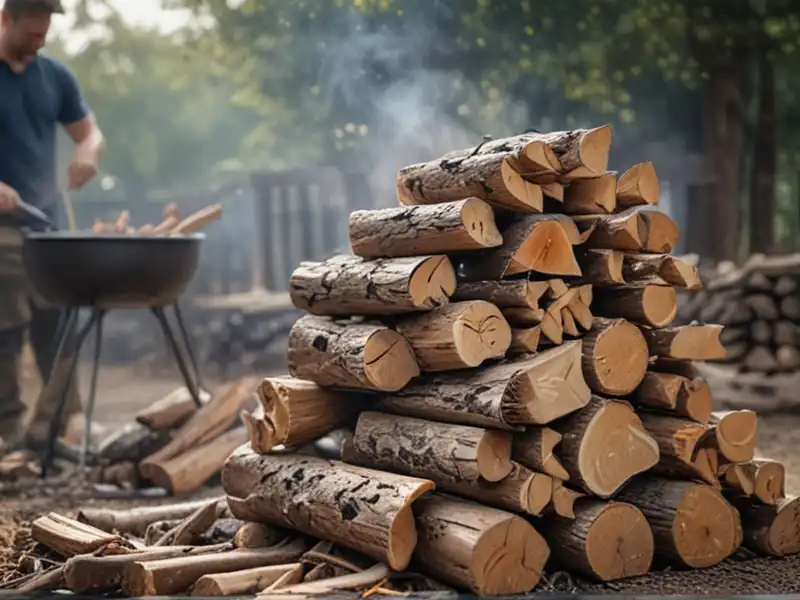Wooden Coins and Firewood: The Roots of Natural Currency
For centuries, before the standardized metal coins and paper bills we know today, societies relied on inventive ways to assign value and conduct trade. Among these were wooden coins, simple yet practical forms of currency that were crafted from nature, and firewood, a vital resource used in barter. In some communities, firewood held enough value to become a real sort of currency, particularly where harsh winters meant warmth was as valuable as wealth.
Today, technology like an old coin value checker app allows us to trace and appreciate the history and worth of these early, natural currencies. It, by the way, highlights how wood-based money and barter systems left a lasting legacy. So, let us study this topic.

The Practical Rise of Wooden Coins: 11th–20th Century
Origins and Use in Medieval Europe
Wooden coins date back to the 11th century, when they appeared as practical substitutes for metal currency in Europe. This was a time when metal resources were scarce and often reserved for higher-value items. The concept was simple: towns and communities would craft coins or tokens out of wood, stamp them with local seals or markings, and use them in local trade. Wooden coins were particularly prevalent in England, Germany, and Switzerland.
Some of the most notable examples of wooden coin use include:
England (12th century): Tally sticks, or "tallies," served as wooden coins for recording debts and tax payments. Notches carved along the stick represented different amounts, and sticks were split down the middle—one half for the taxpayer, one for the treasury.
Germany (13th century): Certain cities issued wooden tokens to handle local trade at annual markets. These coins were temporary currency, as they prevented the need to transport heavy metal coins to the countryside.
Switzerland (14th century): Swiss towns issued wooden coins with carvings to denote their origin and value. It gave a secure local currency for trade fairs and markets.
Wooden Coins at Medieval Fairs
Wooden coins became especially popular at local fairs and seasonal markets, which were common throughout the Middle Ages. As people from various regions came together for these events, transporting a large volume of metal currency was impractical and risky.
Instead, organizers issued wooden tokens stamped with the fair’s date and location, redeemable within the event grounds. These coins represented a trust-based system that made it possible for people to participate in trade without needing “real” currency.
Wooden coins issued at medieval fairs often carried the following details:
Stamp: The fair’s seal or emblem that indicated the origin.
Date: Many tokens were marked with the year or event’s duration.
Value: Often used for specific purchases within the fairgrounds.
Firewood as Currency: A Practical Commodity with Lasting Value
Firewood became a trade item and a form of currency in regions where winter temperatures made it essential for survival. In Northern Europe and parts of North America, firewood was used in bartering systems as early as the 16th century. It is true that the concept of burning currency might seem strange today, but wood was one of the most accessible and vital resources in cold climates. That is why it had value beyond standard money. Here is how firewood functioned as a currency:
Currency for Goods: Firewood was exchanged for essential goods, e.g., grain, salt, livestock, etc.
Payment for Services: People could settle debts with firewood or use it to pay workers in rural or isolated areas.
Rent Payment: In some cases, tenants paid a portion of their rent in cords of firewood, ensuring landlords had enough fuel for winter.

Examples of Firewood as Currency in History:
Region | Time Period | Use as Currency |
Northern Europe | 16th–19th Century | Bartering for goods and services |
North America | 17th–19th Century | Settling debts, rent payments |
Russia | 18th–19th Century | Payment for labor and lodging |
The 20th Century Resurgence of Wooden Coins: The Great Depression
Wooden coins saw a surprising comeback during the Great Depression (1929–1939) when local economies in the United States experienced cash shortages. Particularly in the Pacific Northwest, wooden coins provided temporary relief for struggling communities. Notably, the town of Tenino, Washington, issued wooden nickels in 1931 after the local bank failed.
These Depression-era wooden coins had the following features:
Stamping Date: Coins were stamped with the year and the town’s name.
Value: Typically equivalent to small denominations like nickels or dimes.
Legal Status: Local businesses agreed to accept these coins, though they were not official currency.
Other towns followed Tenino’s example, and wooden coins appeared in various communities as emergency currency. Today, these Depression-era wooden nickels are collectibles. They are often appraised using tools like an old coin value checker app, e.g., Coin ID Scanner, or official grading services.
Firewood in Modern Bartering Systems
Although firewood is rarely used as an official currency today, it remains a valuable commodity in local and rural communities. In areas where people live off-grid or rely on alternative economies, firewood’s value endures. The trade of firewood in exchange for goods or services remains common in regions where cash flow is limited or where people prioritize sustainability over traditional cash systems.
For example:
Scandinavian Regions: Some communities continue bartering firewood for goods like food or equipment, as the winters are long and heating fuel is very important.
Remote North American Areas: In parts of Alaska and northern Canada, firewood can be exchanged for groceries, repair services, and other necessities.
Wooden coins and firewood may no longer circulate widely, but their legacy persists. Today, wooden tokens are often crafted for commemorative purposes at fairs, festivals, and tourist attractions.
In modern times, digital tools allow collectors and historians to appraise wooden coins accurately. If we examine and collect wooden coins, we can see the past where value was tied directly to nature—a reminder that currency isn’t only metal and paper; it’s anything society deems essential.
Wooden coins and firewood, each in their own way, highlight a time when currency was resourceful, local, and adaptable. These natural currencies reveal a legacy of resilience, one where people found wealth in the most basic and accessible materials around them.


